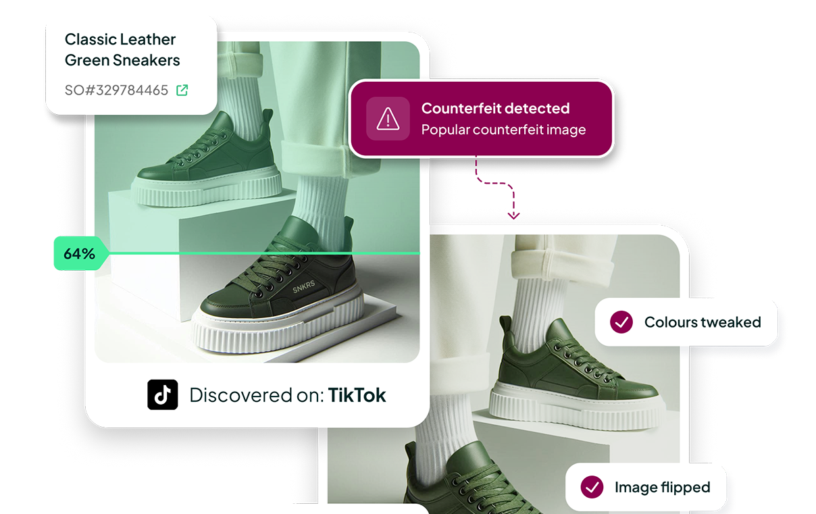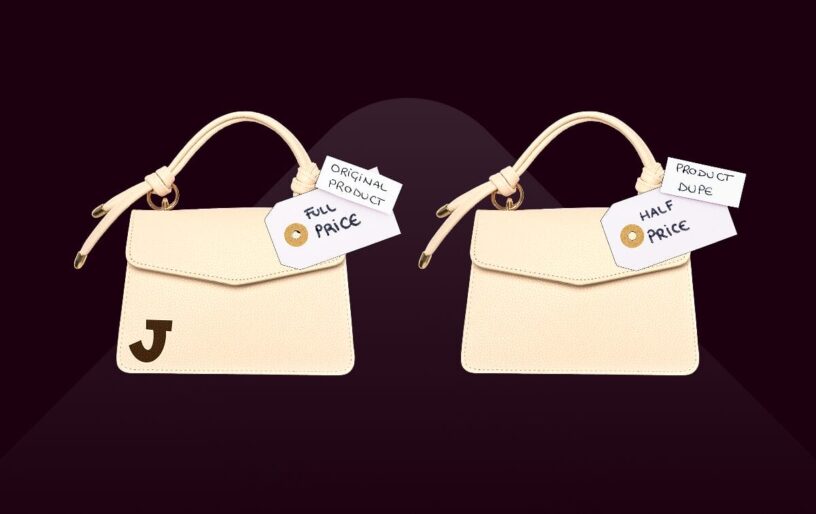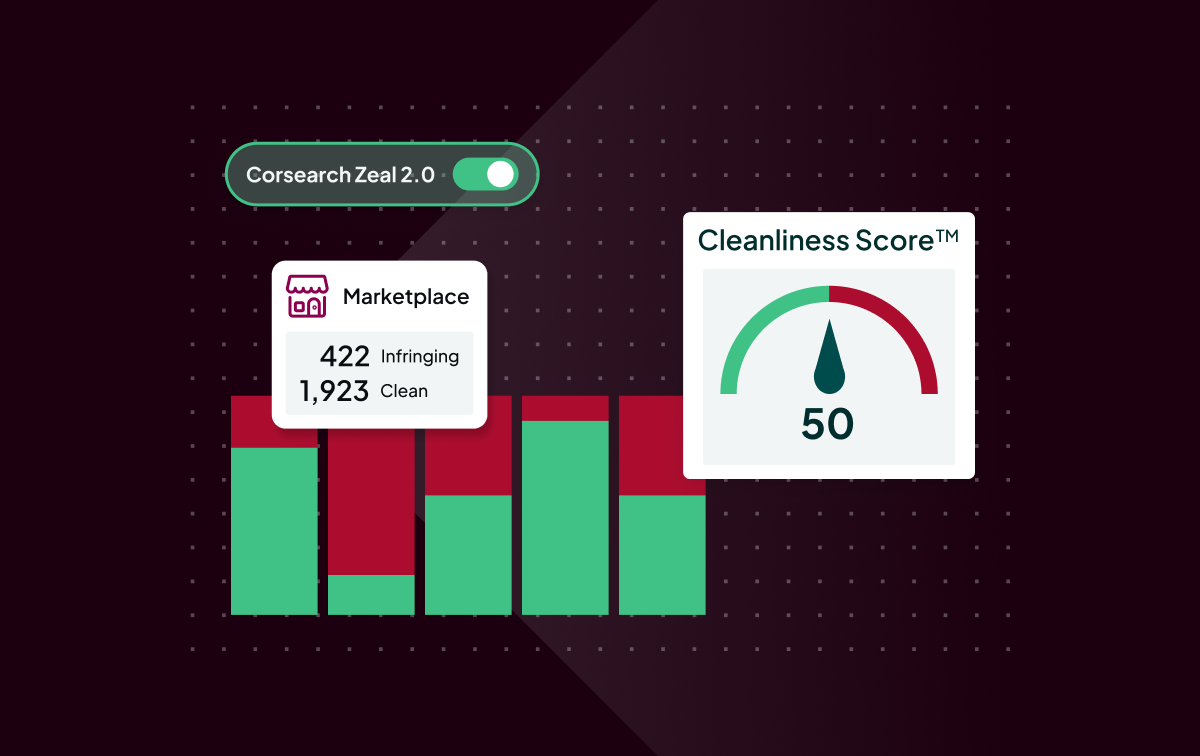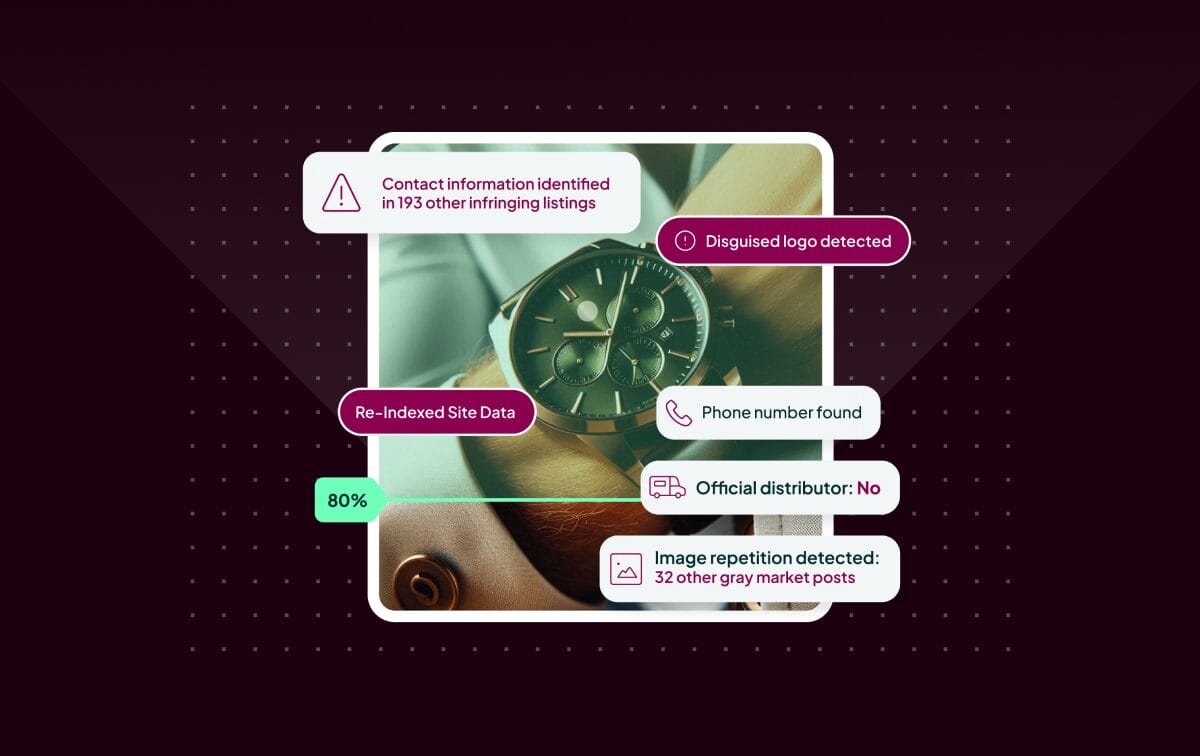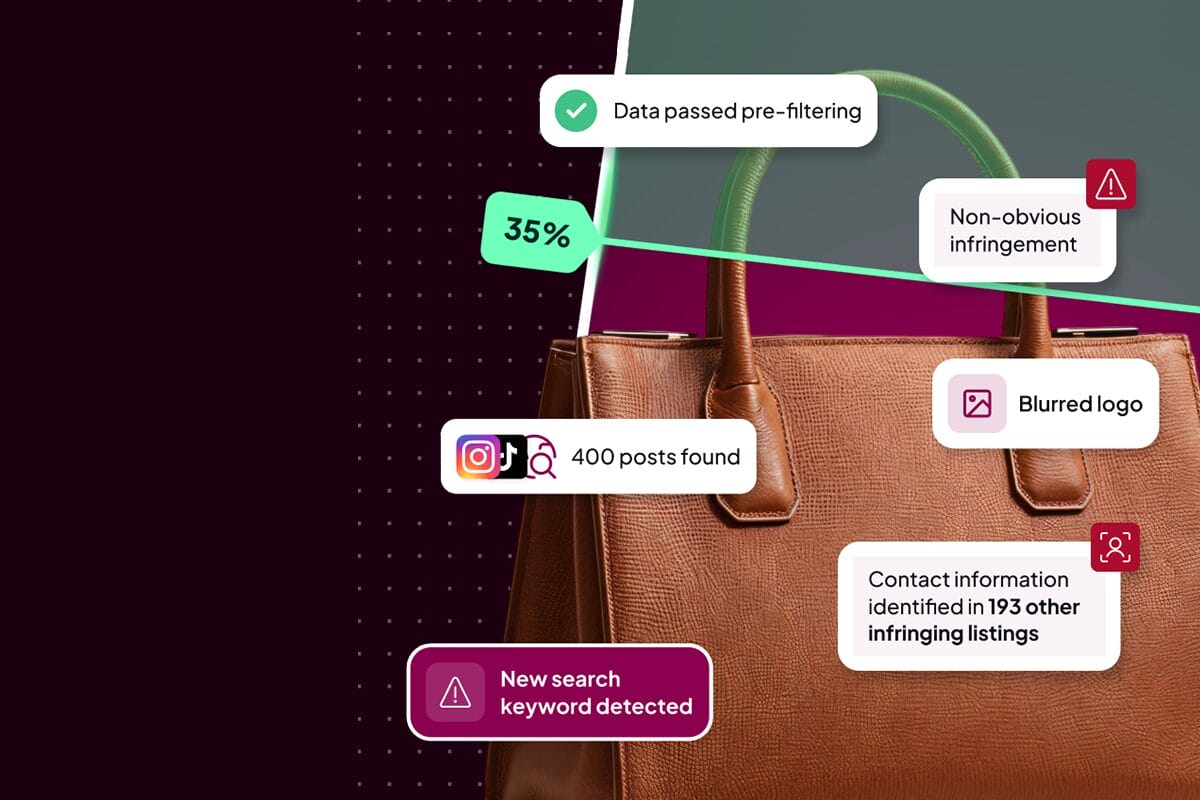Blog
An Invisible War: The Growth of Dupe Culture & Its Ramifications for Brands
- Brand Protection
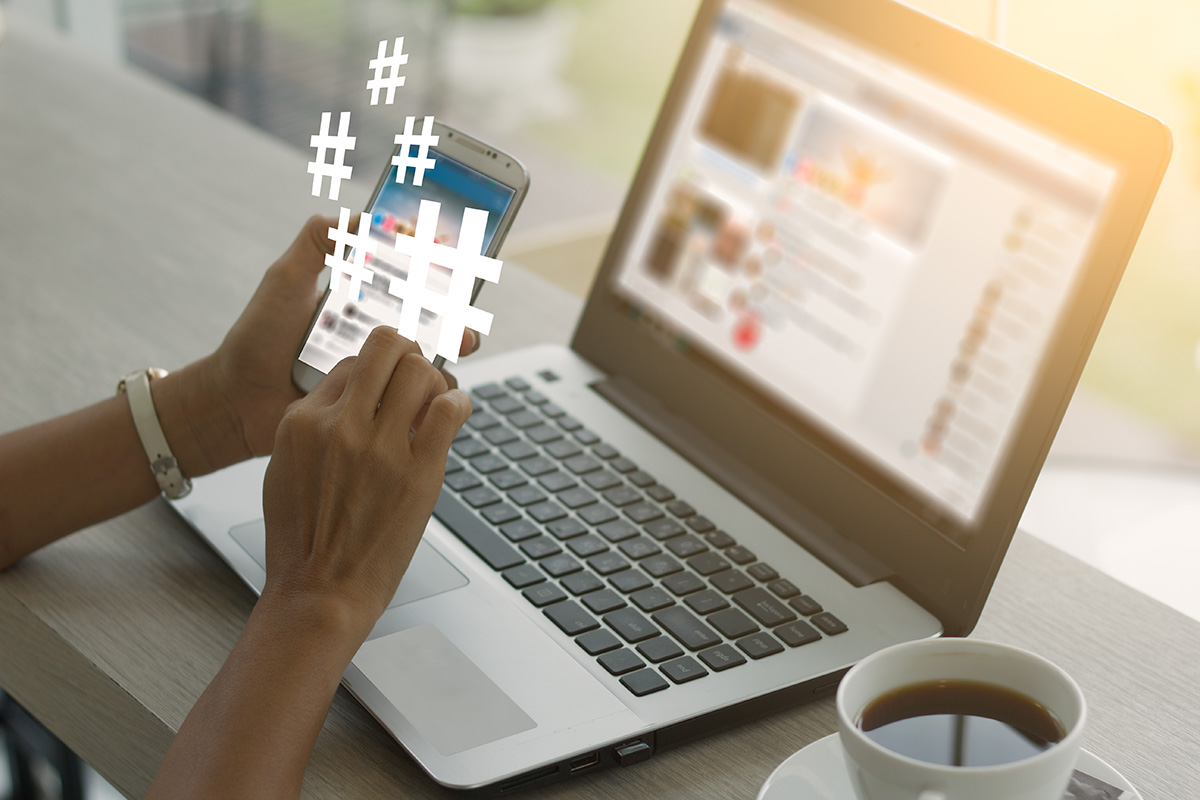
Today’s online shoppers are caught in the crossfire of an invisible war.
Counterfeits and dupes are not just about lost revenue; they are an existential threat to consumer trust, safety, and the environment. From TikTok-hailed dupes to fake luxury bags flooding online marketplaces, counterfeits are everywhere. While some might see it as a harmless bargain hunt, the real-world consequences tell a very different story.
Social media: a catalyst for dupe culture
The rise of social media platforms like TikTok and Instagram has reshaped consumer culture. Younger generations, scrolling through perfectly curated feeds, are inundated with images of luxury handbags, designer outfits, and aspirational lifestyles flaunted by influencers and celebrities.
This creates an endless cycle of desire. For those who can’t afford the latest luxury bag or loafers, “dupe culture” emerges as an alluring alternative.
The algorithmic trap: how dupes get normalized
Shortform content platforms like TikTok, with algorithms that tailor content to individual preferences [1], can subtly pull users into echo chambers. Watch one “luxury dupe haul,” and a steady stream of similar videos floods your feed. What starts as innocent curiosity quickly snowballs into normalization.
When TikTok faced a temporary ban in the U.S., consumers found new ways to hunt down counterfeits and dupes. They turned to “Little Red Note,” a Chinese app originally targeted at the domestic market. And when sweeping tariffs were implemented on imported goods in April 2025, Chinese manufacturers found an opportunity to promote dupe products, using phrases such as “same quality at a cheaper price” on listings (more about how counterfeiters are exploiting tariff uncertainty here).
The rise of the anti-capitalist influencers
In an ironic twist, a new breed of influencer has emerged, those who proudly flaunt their “sweet deals” found online. For them, finding a near-identical knockoff isn’t just savvy, it’s a statement. Many argue, “Why pay thousands for what is essentially the same product?”
But is it really the same? Influencers comparing luxury items with their counterfeit counterparts often praise the impeccable similarity, however, such comparisons ignore critical details: the hidden costs, the dangerous chemicals on the materials, the shortcuts, and the dangerous consequences that extend far beyond aesthetics.
The invisible evil of counterfeiting
Counterfeiting is not just about imitation; it’s an industry with dark undercurrents. Consumers who deliberately seek out counterfeit products often focus solely on the perceived benefits without realizing the invisible costs attached to their choices (more about consumer education and changing Gen Z’s perception of dupes here).
Consumer safety put at grave risk
The myth that counterfeits are just cheaper versions of the real thing is a dangerous one.
- UK enforcement agencies have warned that counterfeit cosmetics sold via TikTok and similar platforms may contain toxic levels of harmful substances such as arsenic and mercury[2].
- In early 2025, U.S. authorities warned of counterfeit airbag inflators sold online, linked to at least three deaths and multiple injuries. These fake parts lacked the necessary components to deploy airbags correctly, posing fatal risks to drivers[3].
- Children are also at risk. In January 2024, over 400 counterfeit toys were seized in Tenerife. These toys lacked proper labeling and safety certifications, presenting serious health hazards to children[4].
Exploitation behind the scenes
Counterfeiting isn’t just about products; it’s about people.
A report by the Transnational Alliance to Combat Illicit Trade (TRACIT) highlights that forced labor is a pervasive issue in the manufacturing and distribution of counterfeit goods, with organized crime groups exploiting vulnerable populations across various high-risk countries[5].
Behind every fake handbag or cosmetic lies a system built on human rights violations. Shining a light on these practices is a moral responsibility, and brands that take action can lead change.
The environmental fallout
Counterfeit goods don’t just threaten people; they’re bad for the planet.
A 2022 report by the OECD and EUIPO detailed how fake goods like counterfeit pesticides, industrial chemicals, and electronics often contain hazardous substances that aren’t properly regulated. These toxic materials pose serious risks to ecosystems, contaminate soil and water, and endanger human health in surrounding areas[6].
Separately, a WIPO Magazine article highlighted the environmental challenges of disposing of counterfeit goods, especially when they contain flammable or chemical components. In many cases, incineration or landfill is the only safe method, resulting in greenhouse gas emissions, toxic residue, and long-term waste management issues for authorities[7].
If you’re serious about sustainability, brand protection must be part of the plan. Supply chain visibility isn’t just a compliance checkbox — it’s an environmental imperative.
Infiltration of supply chains
Most counterfeits don’t show up with a flashing neon sign. They slip quietly into the supply chain, often undetected until the damage is done.
We’ve seen everything from fake semiconductors stalling auto-production to counterfeit smartphone parts leading to recalls.
Supply chains are complex and increasingly opaque, making it easy for fakes to hide in plain sight. Brands need smarter tools to trace the origins of products and verify authenticity at every step — from factory floor to the end consumer.
The real cost: your brand reputation
Every counterfeit in the market chips away at your brand’s credibility. The unassuming consumers don’t blame the bad actors — they blame you. Those that subscribe to dupe culture often think brands are fair game, without realizing the wider ramifications of their purchases.
A 2023 EUIPO study revealed that 80% of consumers said they would lose trust in a brand if it was associated with counterfeit products, even if the brand wasn’t directly at fault[8].
Even low-volume fakes, when left unchecked, can undermine your reputation. Negative reviews and online forums raise questions about quality. Social chatter questions authenticity. Before long, your brand’s image is diluted — and recovery is slow, expensive, and uncertain.
Regulation isn’t keeping pace with bad actors
Let’s be honest: regulation is often several steps behind the bad guys, and their ingenuity knows no bounds.
Social media platforms ban keywords like “DHGate” or “dupes,” but influencers quickly adapt with coded language like “the gate” or “the yellow app,” embedding product Linktree URLs in their bios. These tactics expose the ever-evolving gaps, leaving platforms in a perpetual game of whack-a-mole.
On the other hand, governments introduce new laws and reporting tools, counterfeit networks stay one move ahead. Operating across borders, they adapt quickly, leveraging the same tech brands do, AI, automation, and social commerce — to scale their reach.
In 2024, a Europol press release highlighted how counterfeit operations — spanning industries such as pharmaceuticals — are run by organized criminal groups using e-commerce websites and social media [9]. These groups are often also involved in other serious crimes like drug trafficking, money laundering, and human exploitation, emphasizing that counterfeit purchases fuel multiple forms of criminality.
The status quo isn’t working
The explosion of dupes and counterfeits is outpacing traditional enforcement. Manual takedowns, legal letters, and reactive strategies can’t keep up.
Brands need a proactive approach powered by data and automation. AI-driven brand protection tools can:
- Identify infringers.
- Prioritize the most harmful threats.
- Take fast action across global platforms.
Where do brands go from here?
This isn’t just about removing fakes. It’s about protecting consumers, values, and your business’ future. Brands must leverage AI-driven solutions for faster, smarter enforcement to protect the unaware and well-intentioned consumer. For consumers who intentionally buy into dupe culture, making counterfeit products inaccessible is key. Modern brand protection requires more than traditional enforcement. Sophisticated tools — powered by AI — offer:
- Global visibility.
- Real-time detection.
- Smarter enforcement workflows.
The war on counterfeits isn’t won with whack-a-mole efforts — it’s won with data-led strategies that clean platforms and protect consumers from harm.
Stop counterfeits and dupes with next-gen brand protection solutions.
Want to see what that looks like in action?
References:
[1] A social media trend: how does TikTok influence adults? — Gulhan Bizel, Research Gate, 2022. https://www.researchgate.net/publication/358204269_A_SOCIAL_MEDIA_TREND_HOW_DOES_TikTok_INFLUENCE_ADULTS
[2] TikTok cashing in on sale of counterfeit cosmetics and prescription skin creams — The Guardian, 2023.
https://www.theguardian.com/technology/2023/apr/23/tiktok-cashing-in-counterfeit-beauty-products-skin-gels
[3] Deadly auto parts selling online and drivers’ safety is at risk – sick ‘inflator’ trick could make crashes fatal — The U.S. Sun, 2025.
https://www.the-sun.com/motors/14344925/deadly-airbag-inflator-scam-online-counterfeit-part/
[4] Police seize over 400 dangerous counterfeit toys — Canarian Weekly, 2024.
https://www.canarianweekly.com/posts/Police-seize-over-400-dangerous-counterfeit-toys-in-the-south-of-Tenerife
[5] Exposing Supply Chain Vulnerabilities to Illicit Trade — TRACIT, 2023. https://www.tracit.org/uploads/1/0/2/2/102238034/tracit_exposing_supply_chain_vulnerabilities_to_illicit_trade_nov2023_full_report.pdf
[6] Dangerous Fakes: Trade in Counterfeit Goods that Pose Health, Safety and Environmental Risks — OECD/EUIPO, 2022. https://www.oecd.org/en/publications/dangerous-fakes_117e352b-en.html
[7] Disposing of counterfeit goods: unseen challenges — WIPO Magazine, 2012.
https://www.wipo.int/en/web/wipo-magazine/articles/disposing-of-counterfeit-goods-unseen-challenges-38330
[8] 2023 IP Perception Study — EUIPO, 2023.
https://euipo.europa.eu/ohimportal/en/web/observatory/ip-perception-2023
[9] The dark side of fake goods — Europol, 2024.
https://www.europol.europa.eu/media-press/newsroom/news/dark-side-of-fake-goods

